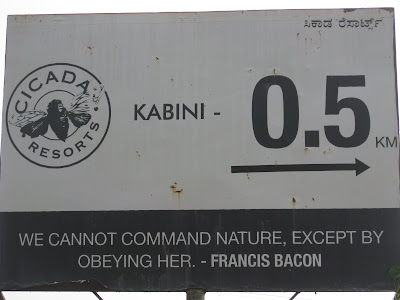


 K: Happy New Year from Ooty! This town is South India's most famous Hill Station, established by the British in the early 19th century as the summer headquarters of the government. The drive up to Ooty (elevation 2300 meters) was a serious of 36 hairpin turns, blind curves on a single lane (more or less) road. Of course, the single lane is meant to accommodate two-way traffic. Let's just say that Murughan (our driver) was much better suited to the driving than either one of us. The scenery is stunning with lush vegetation and small farms tiered throughout the hills.
K: Happy New Year from Ooty! This town is South India's most famous Hill Station, established by the British in the early 19th century as the summer headquarters of the government. The drive up to Ooty (elevation 2300 meters) was a serious of 36 hairpin turns, blind curves on a single lane (more or less) road. Of course, the single lane is meant to accommodate two-way traffic. Let's just say that Murughan (our driver) was much better suited to the driving than either one of us. The scenery is stunning with lush vegetation and small farms tiered throughout the hills.We were visited by monkeys on one section of the drive through a national park. They are clearly well-trained, waiting on the side of the road for passengers to feed them crackers or peanuts. We were instructed to only open the window a small crack or we would have a car full of them. They were on the roof, the hood and bouncing of the side of the car, looking for hand-outs. Note the very, very, young baby clinging to its mother in one of the photos.
(V: I've always liked monkeys... I feel a close, deep kinship with them ... .)
We visited one of Ooty's main attractions, the Thread Museum. The pictures of flowers are actually all made from individual wrapped pieces of silk thread. Maybe not a highlight, but they are trying to make the Guinness Book of World Records.
(V: It is either really impressive or just plain sad that 50 'artists' spent 12 years making this 'garden' of thread flowers and plants. Thus far, this is the 'kitschy' spot we've seen in India. Come to think of it, the amusement park for kids in Ooty called Jolly World comes in second.)
The city of Ooty was bustling with commerce and people, about 93,000. We noted the curious little Christian churches, more like church recesses, set amidst the Hindu temples.
Now on to the coastal town of Alleppey!





























































